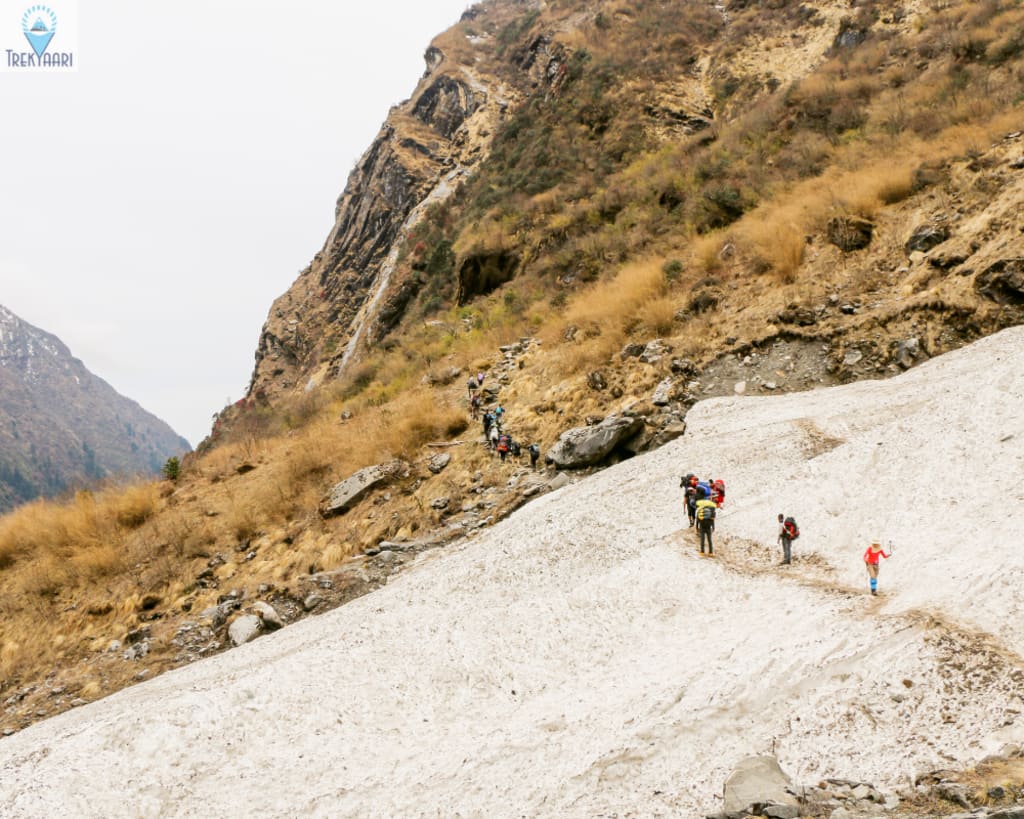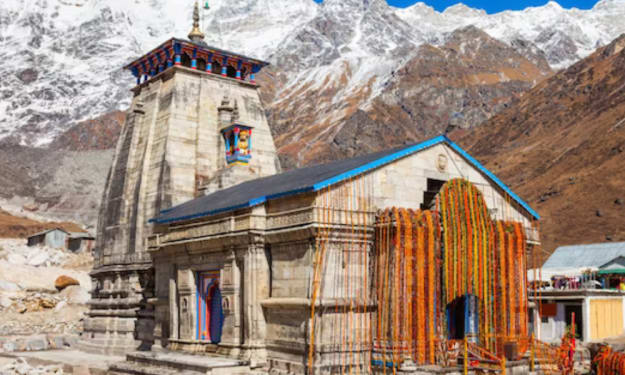Exploring the Nag Tibba Trek: A Journey Through the Himalayan Serenity
Nag Tibba Trek

Nestled in the Garhwal Himalayas of Uttarakhand, India, the Nag Tibba trek stands as a testament to the allure of the mountains. Known as the Serpent’s Peak, Nag Tibba offers trekkers a perfect blend of natural beauty, cultural richness, and a moderate trekking challenge. This journey through the lower Himalayas promises breathtaking vistas, serene landscapes, and encounters with local culture, making it an ideal choice for both beginners and seasoned trekkers alike.
Unveiling the Charm of Nag Tibba
The Nag Tibba trek begins from Pantwari, a quaint village that serves as the gateway to this Himalayan adventure. At an altitude of approximately 3,022 meters (9,915 feet), Nag Tibba offers panoramic views of the snow-clad peaks of Bandarpoonch, Kedarnath, and Gangotri ranges. The trek, spanning over two days, unfolds through diverse terrain, including dense forests, meadows, and rocky paths, each revealing its unique charm and beauty.
Day 1: Pantwari to Nag Tibba Base Camp
Setting Off from Pantwari
The journey commences with a scenic drive from Dehradun to Pantwari, passing through picturesque landscapes of the Garhwal region. Pantwari, with its terraced fields and traditional houses, exudes a rustic charm that instantly connects trekkers with the rural life of Uttarakhand. As the starting point of the trek, Pantwari offers trekkers a glimpse into the local culture and warm hospitality of its inhabitants.
Trekking Through Rhododendron Forests
From Pantwari, the trail meanders through Rhododendron forests, especially vibrant during spring when these trees are adorned with crimson blossoms. The sight of these colorful flowers against the backdrop of lush greenery sets a picturesque tone for the trek. The gentle ascent allows trekkers to acclimatize gradually to the altitude, making the journey enjoyable and less strenuous.
Arrival at Nag Tibba Base Camp
After a few hours of trekking, the Nag Tibba base camp comes into view, nestled amidst a clearing in the forest. The base camp, with its serene ambiance and panoramic views of the surrounding mountains, provides a perfect setting to rest and rejuvenate before the final push to the summit. As evening descends, trekkers are treated to a spectacular sunset, painting the sky in hues of orange and pink, a prelude to the majestic views awaiting at the summit.
Day 2: Summiting Nag Tibba and Return to Pantwari
Early Morning Ascent
The second day begins before dawn, as trekkers embark on the final ascent to Nag Tibba summit to witness the sunrise. The early morning chill is invigorating, with the crisp mountain air filled with the fragrance of pine and juniper. The initial part of the trail winds through dense oak and deodar forests, offering glimpses of wildlife and bird species native to the region.
Reaching the Summit
As the trail climbs higher, the landscape transforms into rocky terrain, requiring careful navigation and steady pace. Each step towards the summit brings trekkers closer to the breathtaking panoramic views that await at the top. Upon reaching the Nag Tibba summit, trekkers are rewarded with a 360-degree vista of the Himalayan ranges, including prominent peaks like Swargarohini, Bandarpoonch, and Kala Nag.
Moments of Tranquility and Reflection
Standing atop Nag Tibba, surrounded by the pristine beauty of the Himalayas, trekkers often find moments of tranquility and reflection. The serene silence interrupted only by the occasional chirping of birds or the rustling of leaves in the breeze creates a profound connection with nature. It's a moment to appreciate the vastness of the mountains, the resilience of the human spirit, and the beauty of the natural world.
Descent and Return to Pantwari
After spending time at the summit, soaking in the views and capturing memories through photographs, trekkers begin their descent back to Pantwari. The return journey allows trekkers to revisit familiar landscapes from a different perspective, appreciating the diversity of flora and fauna that thrive in the Himalayan ecosystem. By late afternoon, trekkers arrive back in Pantwari, their hearts and minds filled with memories of a journey that transcends mere physical exertion.
Cultural Insights and Local Interactions
Embracing Local Hospitality
One of the highlights of the Nag Tibba trek is the opportunity to interact with the locals of Pantwari and neighboring villages. The villagers, known for their warm hospitality and simple way of life, welcome trekkers with open arms. Engaging with locals offers trekkers insights into traditional practices, local cuisine, and folklore that enrich the cultural experience of the trek.
Sacred Significance of Nag Tibba
For the locals, Nag Tibba holds significant religious and cultural importance. The peak is believed to be the abode of Nag Devta, the serpent god, and is revered through rituals and ceremonies performed by the villagers. Trekkers often encounter small shrines and sacred sites dedicated to Nag Devta along the trail, providing glimpses into the spiritual beliefs and traditions rooted in the region's history.
Flora and Fauna of Nag Tibba
Biodiversity Amidst the Himalayas
The Nag Tibba trek is not just a journey of scenic beauty but also a treasure trove of biodiversity. The trail traverses through diverse ecosystems, each harboring a rich variety of flora and fauna. Lower altitudes are adorned with Rhododendrons, oak, and deodar forests, while higher altitudes feature alpine meadows and rocky slopes.
Avian Delights and Wildlife Encounters
Bird enthusiasts will delight in spotting Himalayan bird species such as Monal Pheasants, Himalayan Griffons, and Khalij Pheasants along the trekking route. The forests are also home to Himalayan black bears, leopards, and musk deer, though sightings of these elusive creatures are rare and require a keen eye and silent observation.
Challenges and Triumphs
Physical and Mental Endurance
Every trek comes with its challenges, and Nag Tibba is no exception. The ascent to the summit involves navigating steep and rocky terrain, testing trekkers' physical endurance and stamina. The changing weather conditions, from sunny mornings to sudden showers or fog, add an element of unpredictability to the trek.
Personal Growth and Achievement
Despite the challenges, reaching the summit of Nag Tibba is a testament to personal growth and achievement. It's a journey that pushes trekkers beyond their comfort zones, fostering resilience, determination, and a sense of accomplishment. Each step towards the summit is a triumph over obstacles, both external and internal, reaffirming the power of perseverance in achieving goals.
Environmental Stewardship
Preserving the Pristine Himalayan Ecosystem
Trekking in the Himalayas comes with a responsibility to preserve the pristine environment for future generations. Trekkers are encouraged to practice Leave No Trace principles, ensuring minimal impact on the natural surroundings. This includes proper disposal of waste, respecting wildlife habitats, and staying on designated trails to prevent soil erosion.
Community Engagement and Sustainability
Beyond environmental conservation, trekking in Nag Tibba promotes community engagement and sustainable tourism practices. Supporting local guides, porters, and eco-friendly initiatives contributes to the economic well-being of the region while fostering cultural exchange and mutual respect between trekkers and locals.
Tips for Future Trekkers
Preparation and Essentials
For trekkers planning to embark on the Nag Tibba trek, adequate preparation and essential gear are crucial for a safe and enjoyable experience:
Physical Fitness: Prioritize cardiovascular exercises, strength training, and endurance-building activities to prepare for the trek's demands.
Packing Essentials: Include sturdy trekking shoes, layered clothing, waterproof outerwear, a first aid kit, high-energy snacks, and ample water supply.
Acclimatization: Allow time for acclimatization, especially if traveling from lower altitudes, to prevent altitude-related illnesses.
Responsible Trekking: Practice Leave No Trace principles, respect local customs and traditions, and support sustainable tourism practices during your trekking journey.
Conclusion
The Nag Tibba trek is more than just a physical journey; it's an immersive experience that celebrates the beauty of the Himalayas, the resilience of nature, and the spirit of adventure. From panoramic mountain views to cultural encounters with local communities, every aspect of the trek leaves a lasting impression on trekkers. It's a journey that inspires, rejuvenates, and connects individuals with the natural wonders of the world, making it a must-explore destination for all trekking enthusiasts.
About the Creator
Trekyaari
Trekyaari is the best trekking company in India offering comprehensive trekking, adventure, holiday tours, and expedition services. Explore the best of India's nature and culture with us!
Enjoyed the story? Support the Creator.
Subscribe for free to receive all their stories in your feed. You could also pledge your support or give them a one-off tip, letting them know you appreciate their work.






Comments
There are no comments for this story
Be the first to respond and start the conversation.